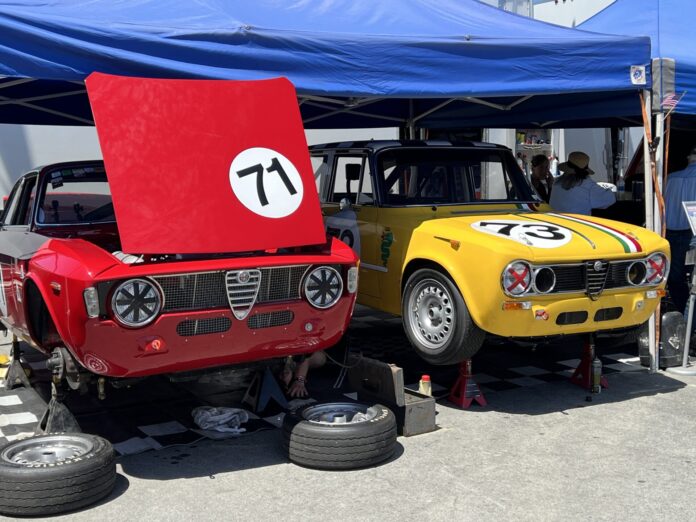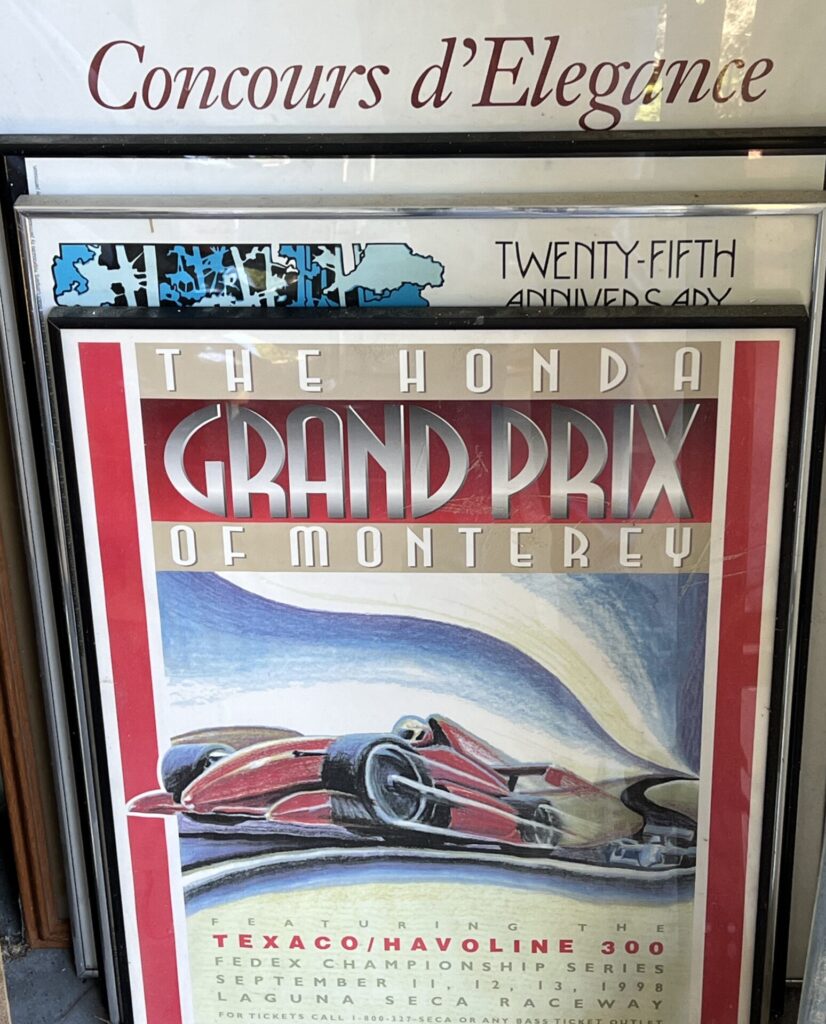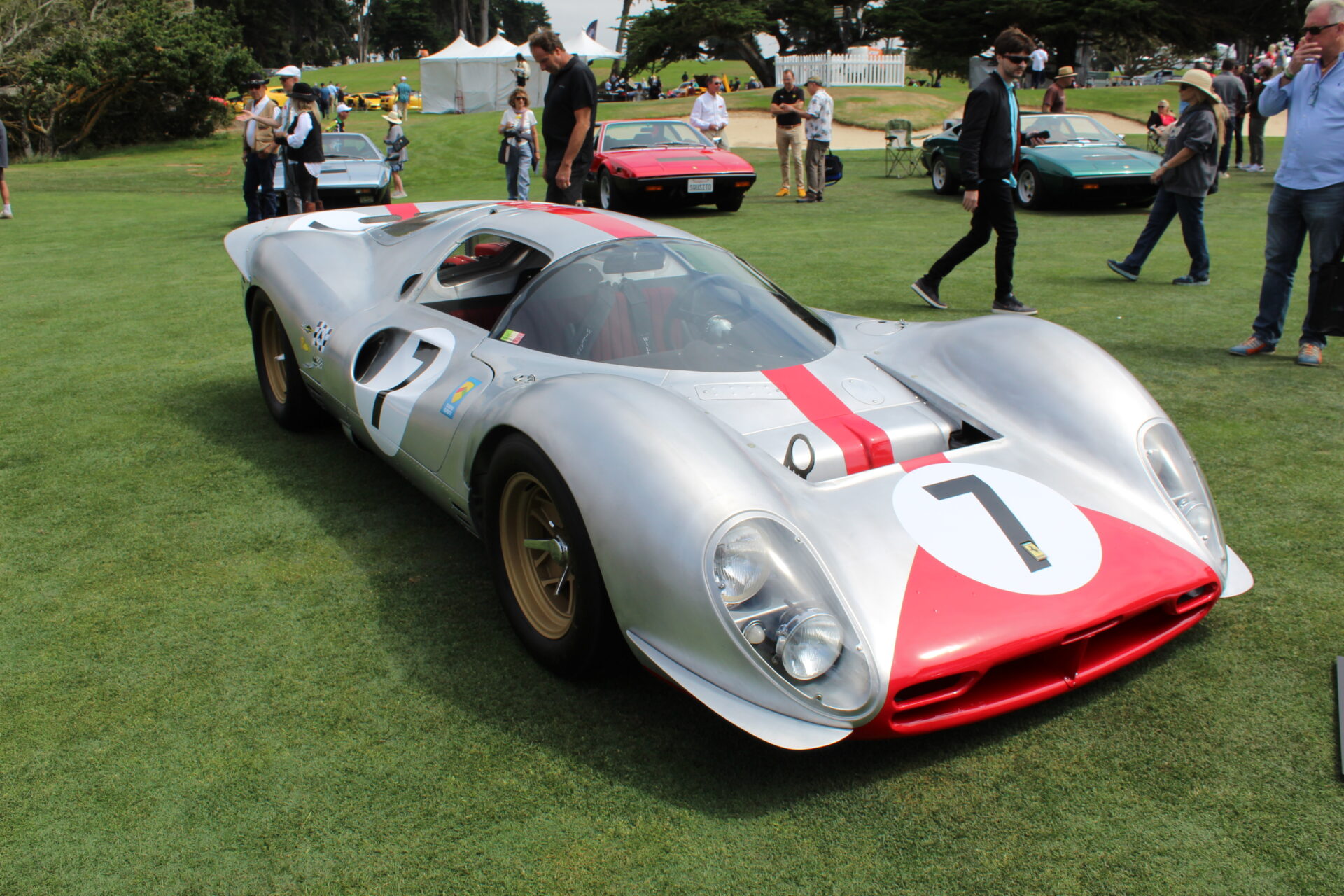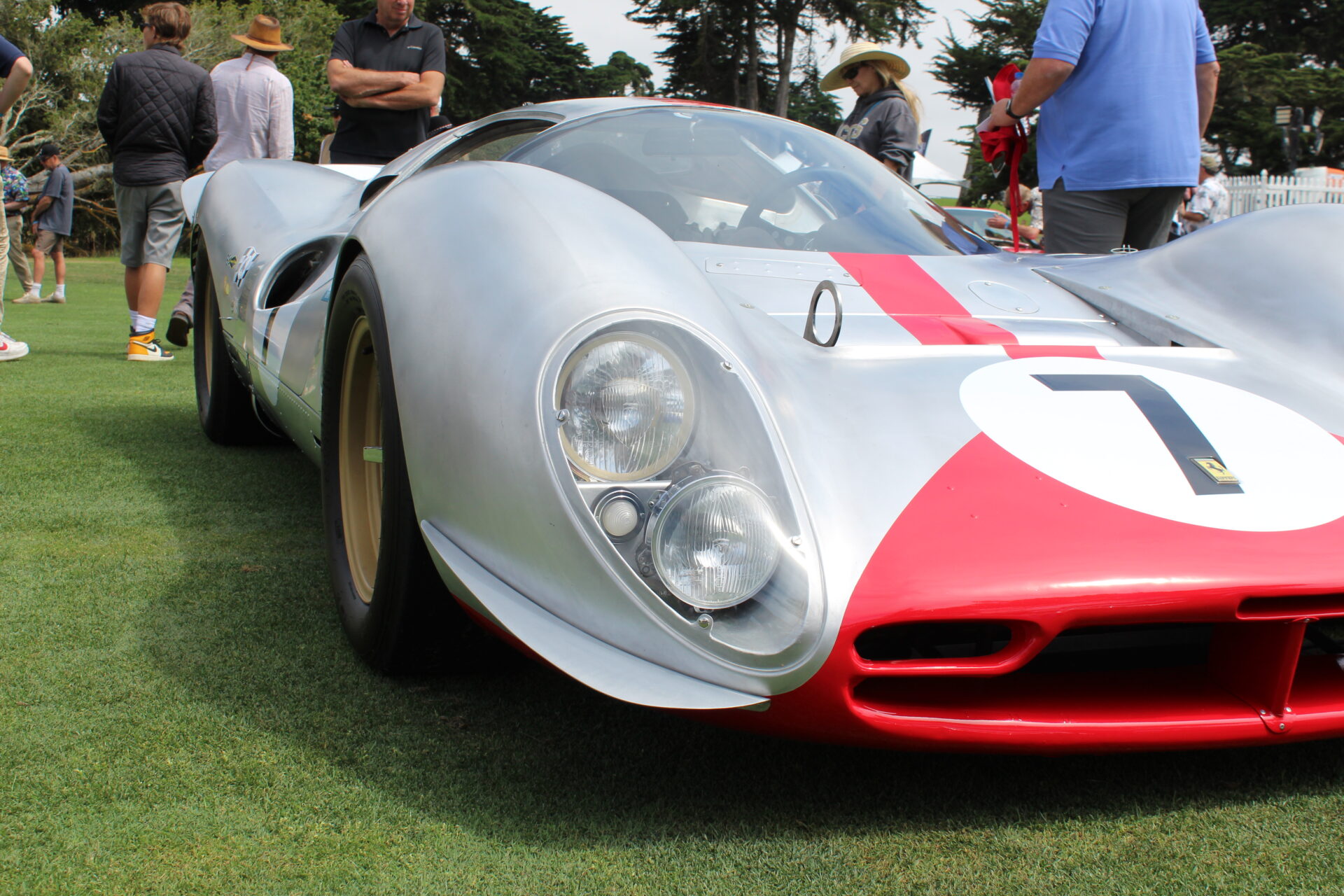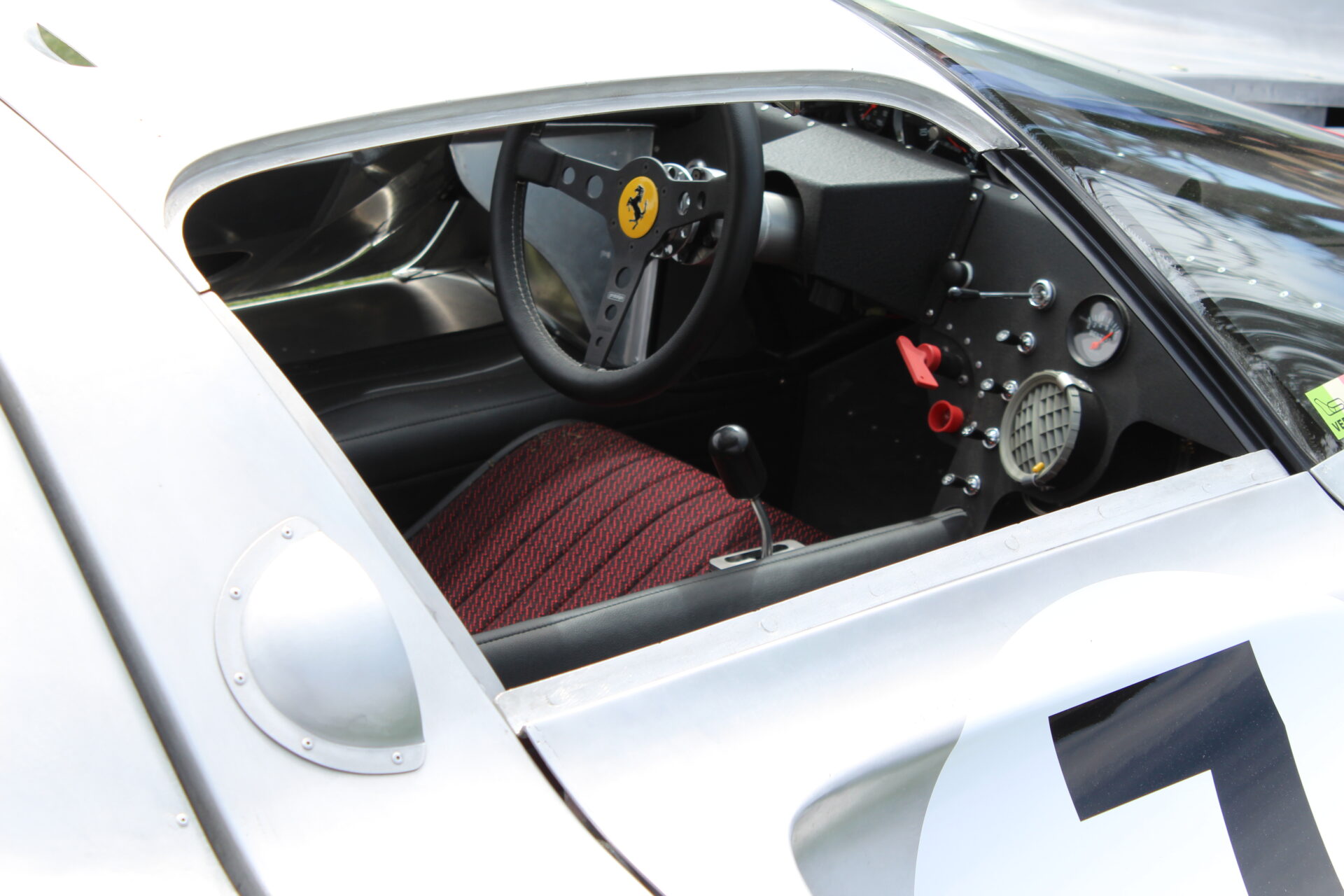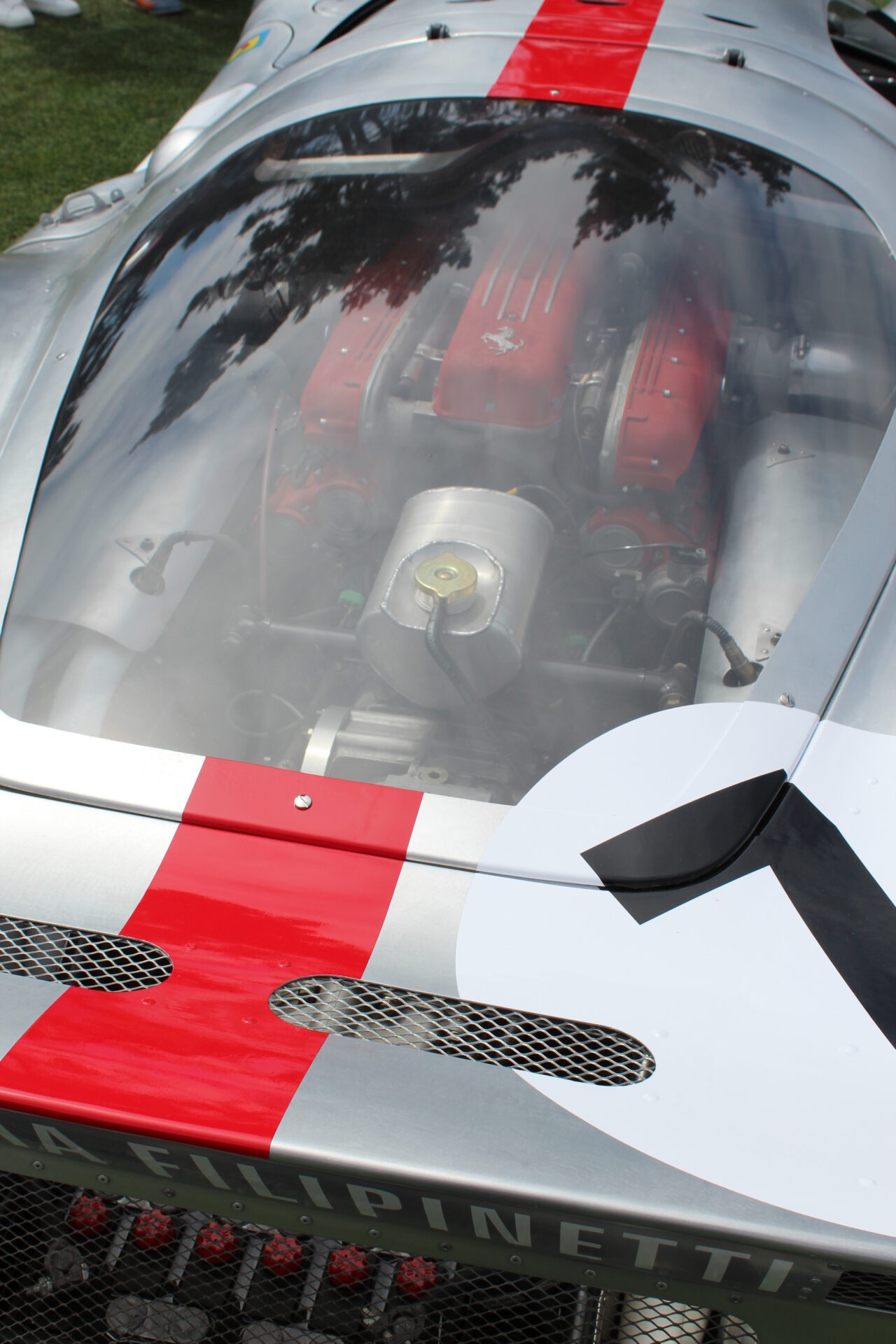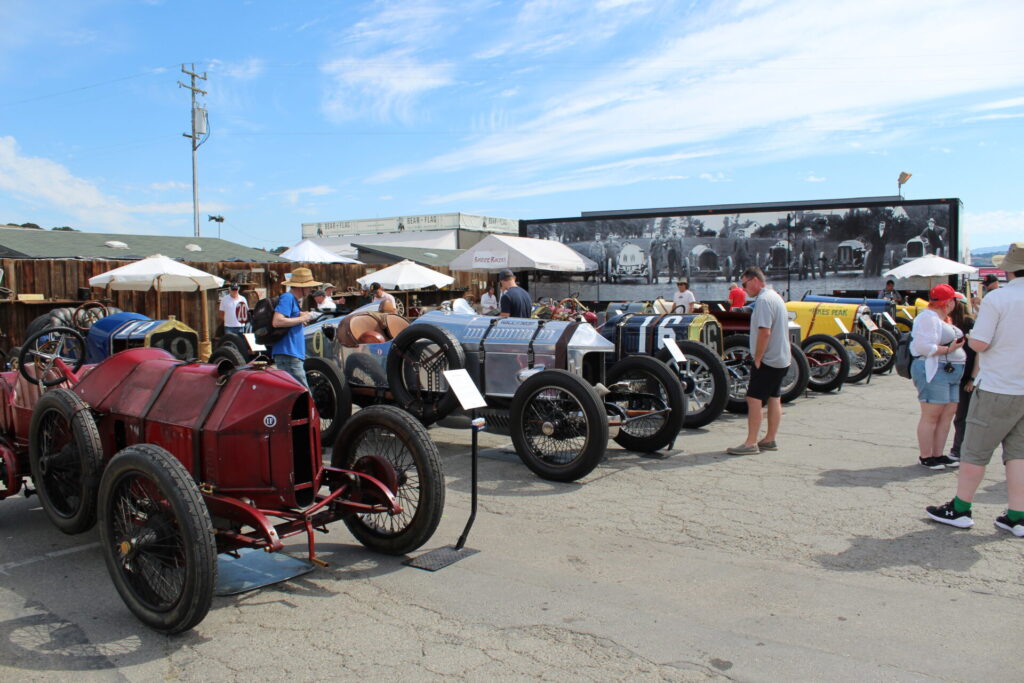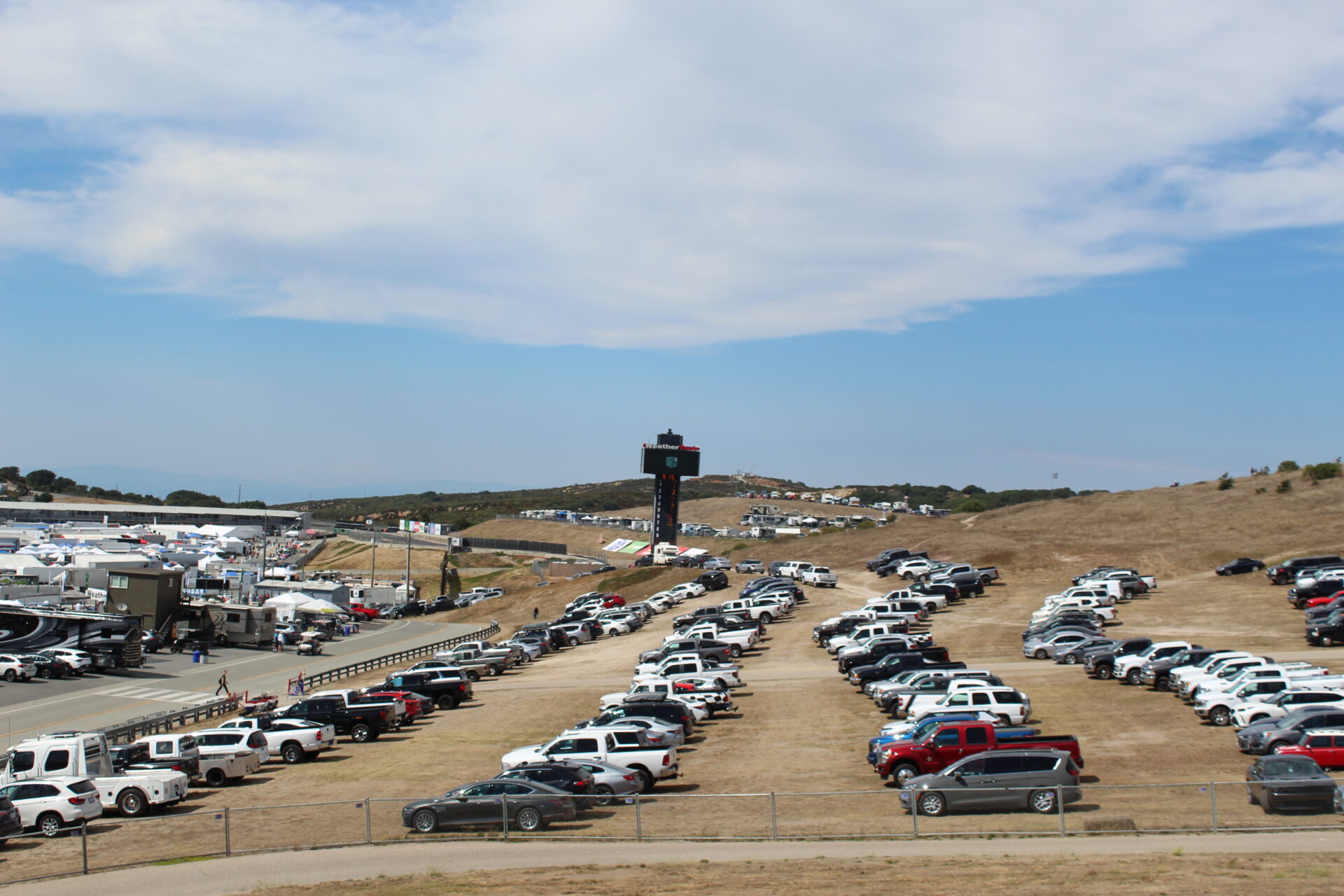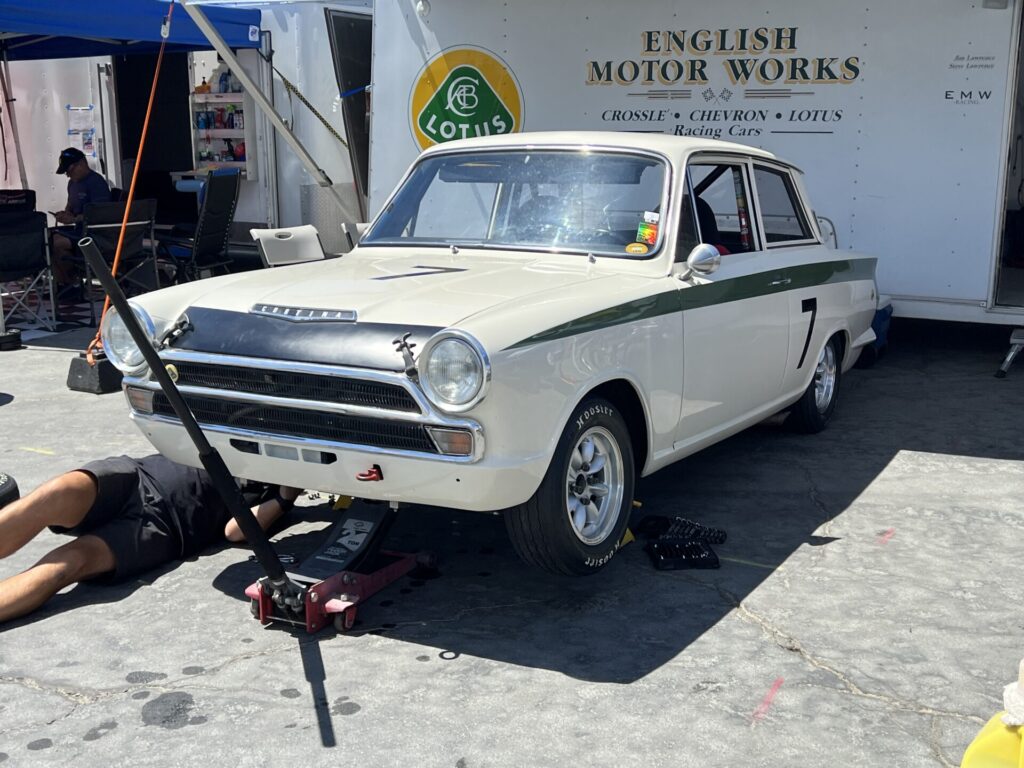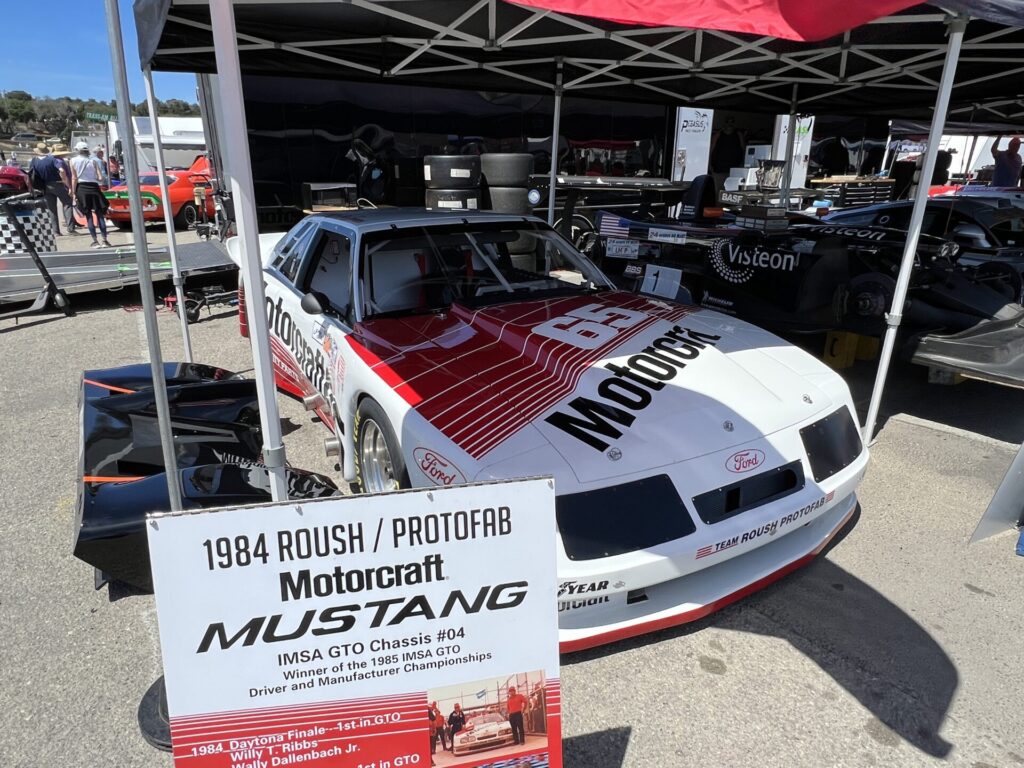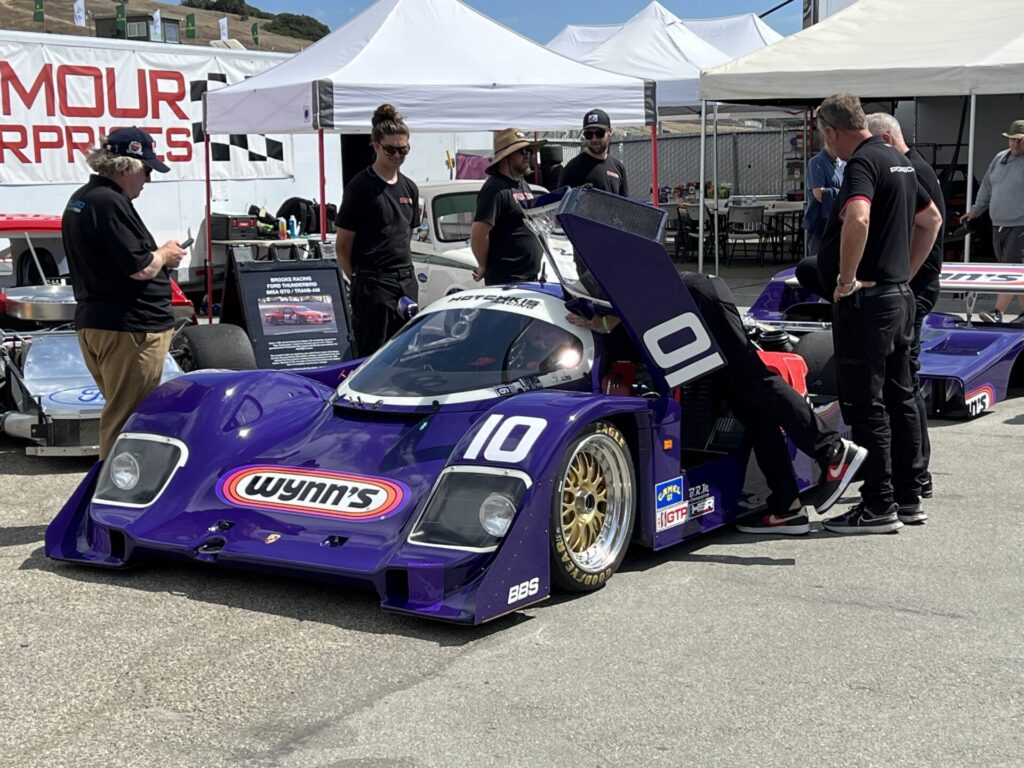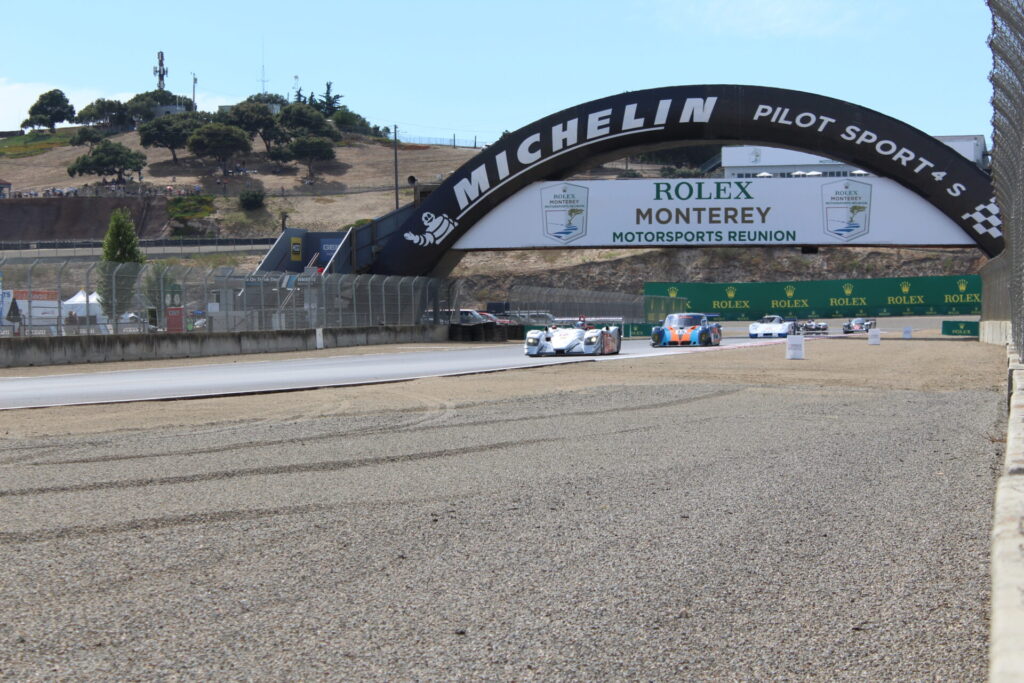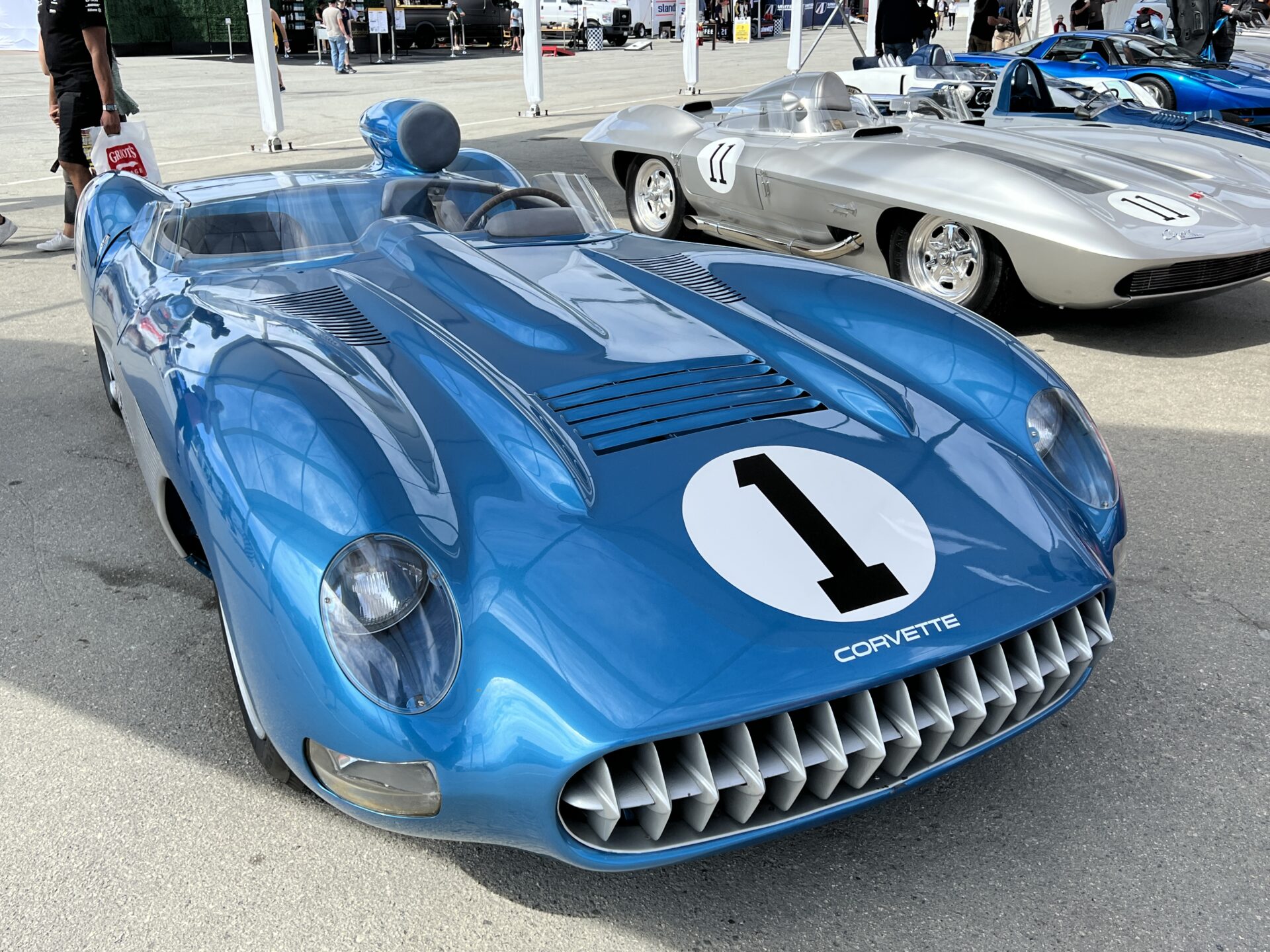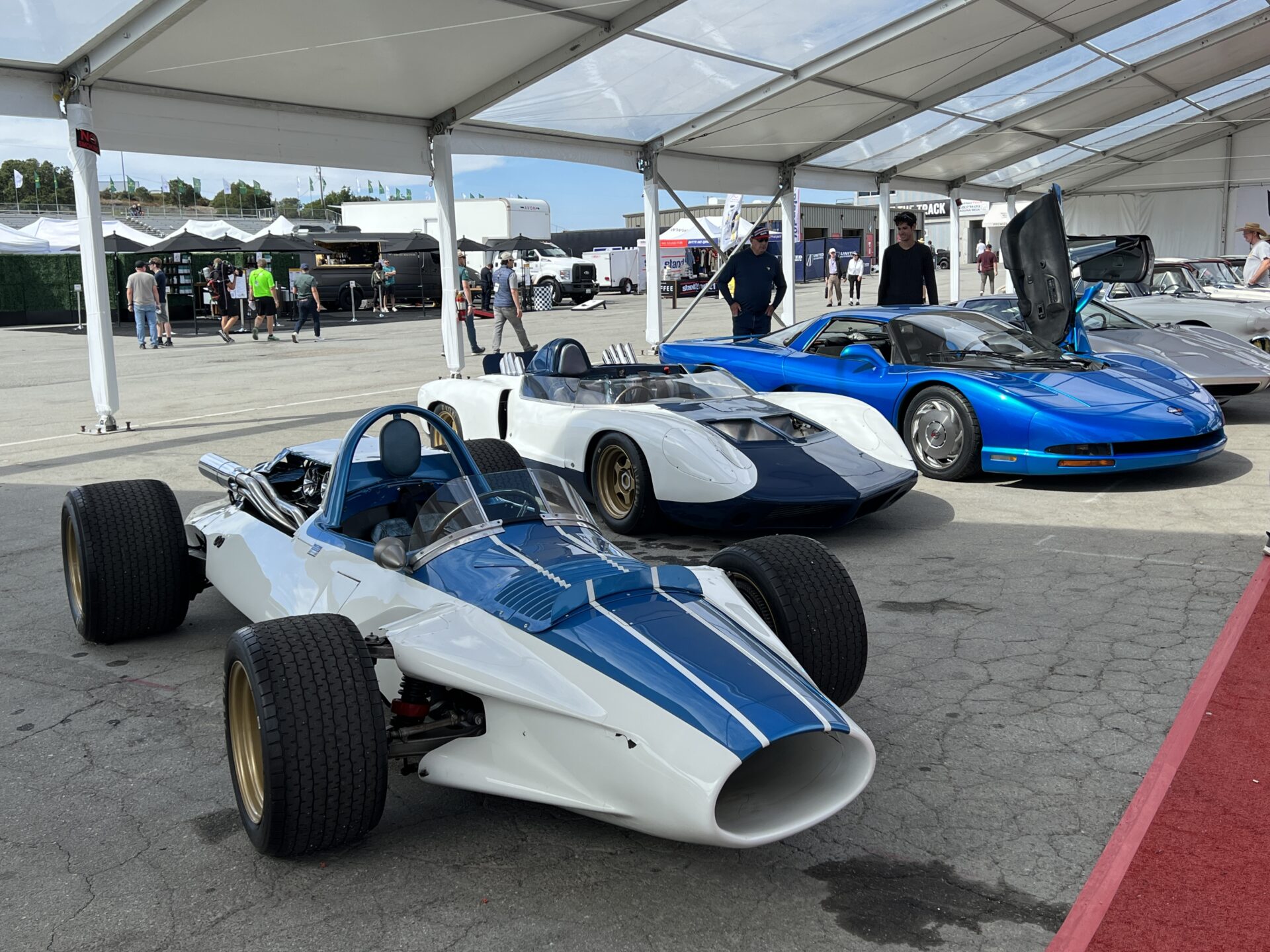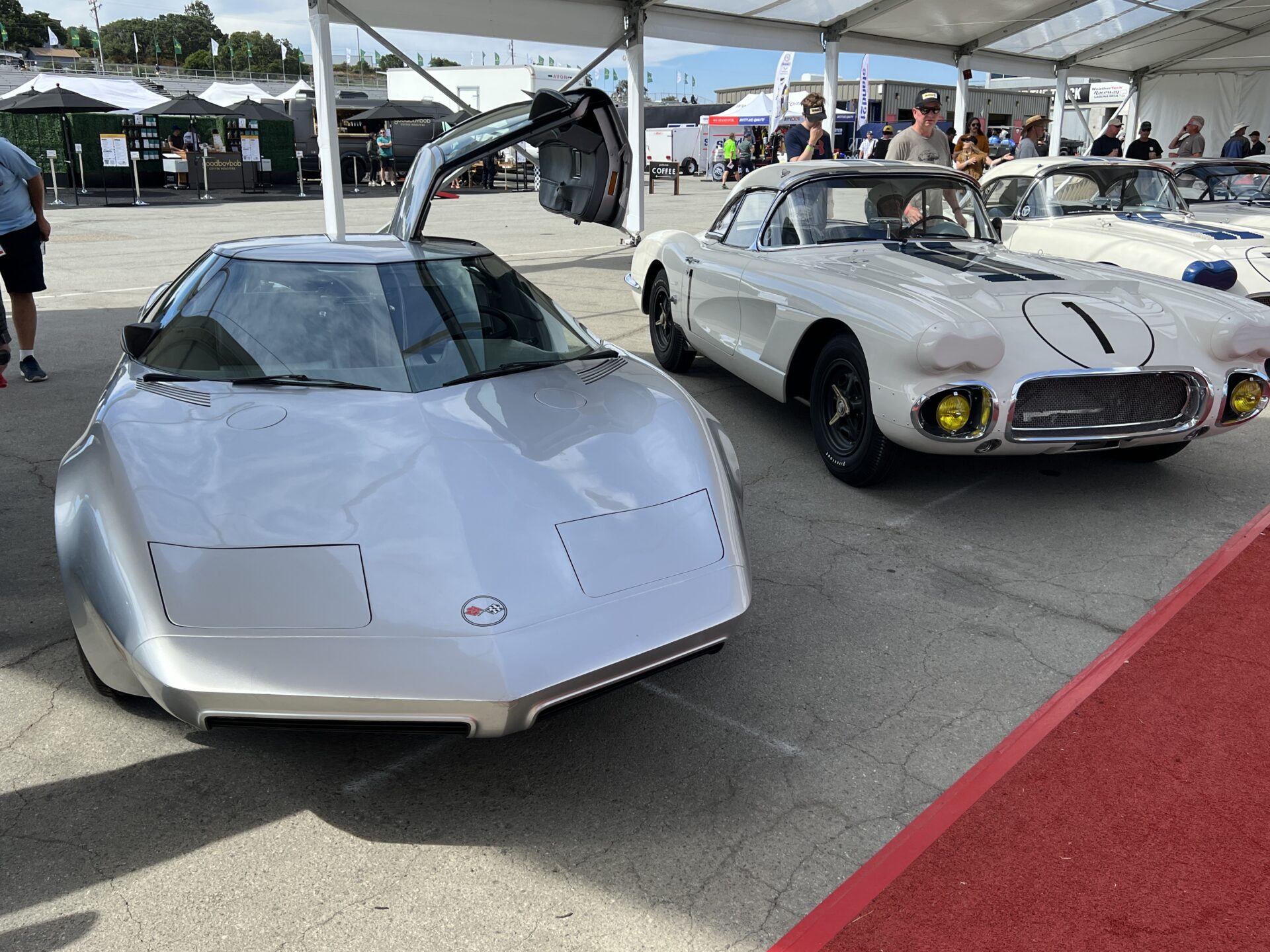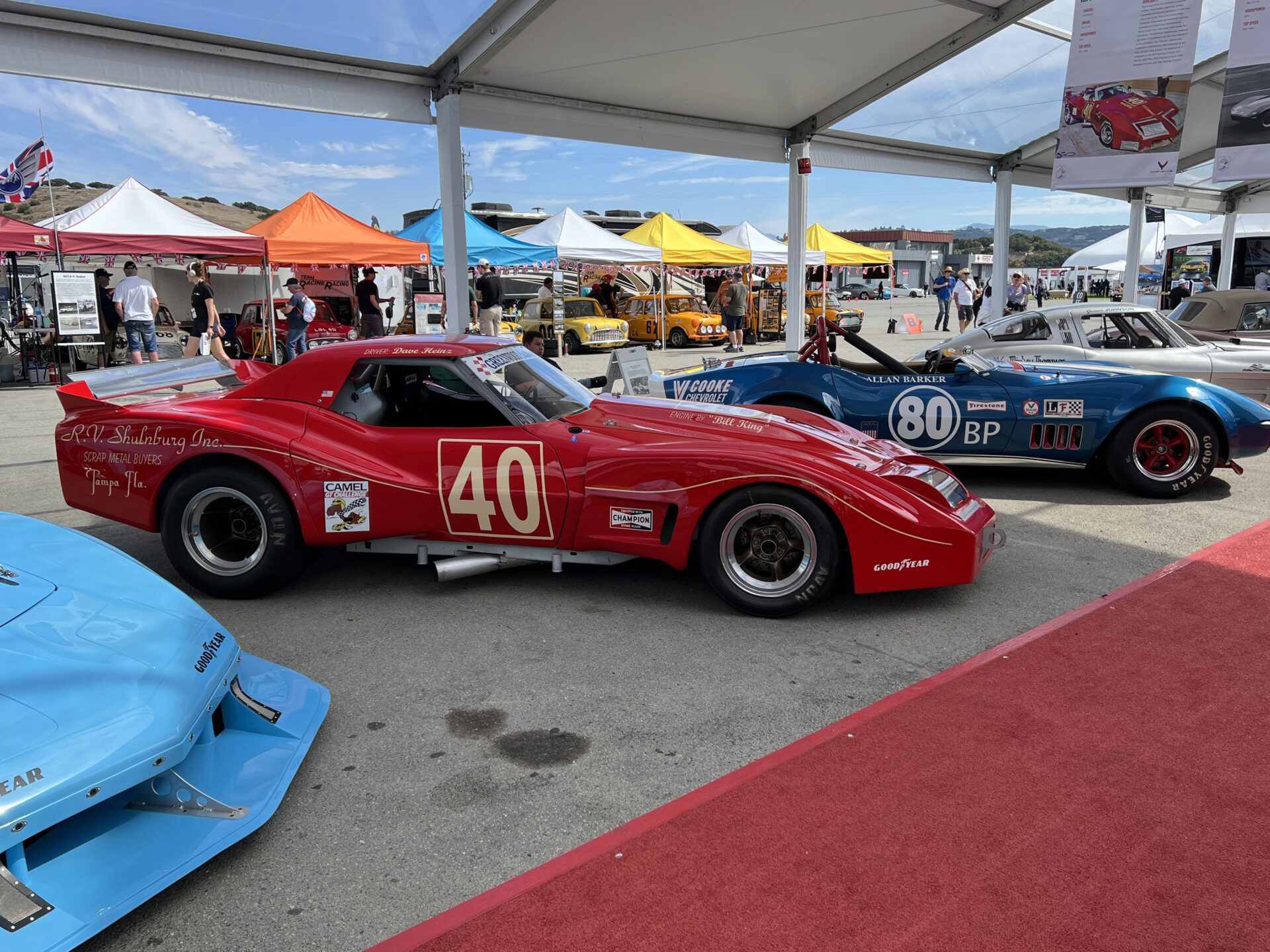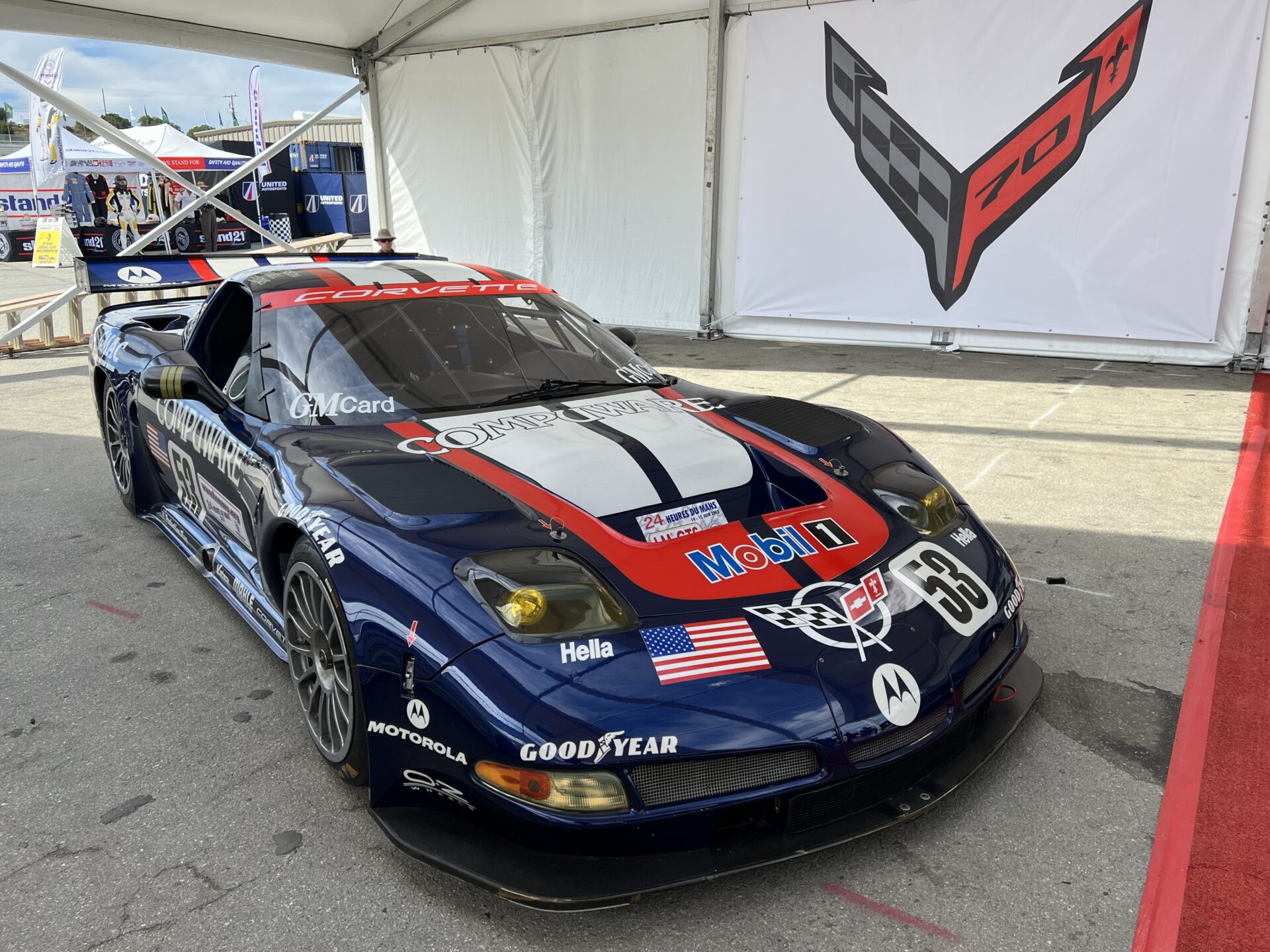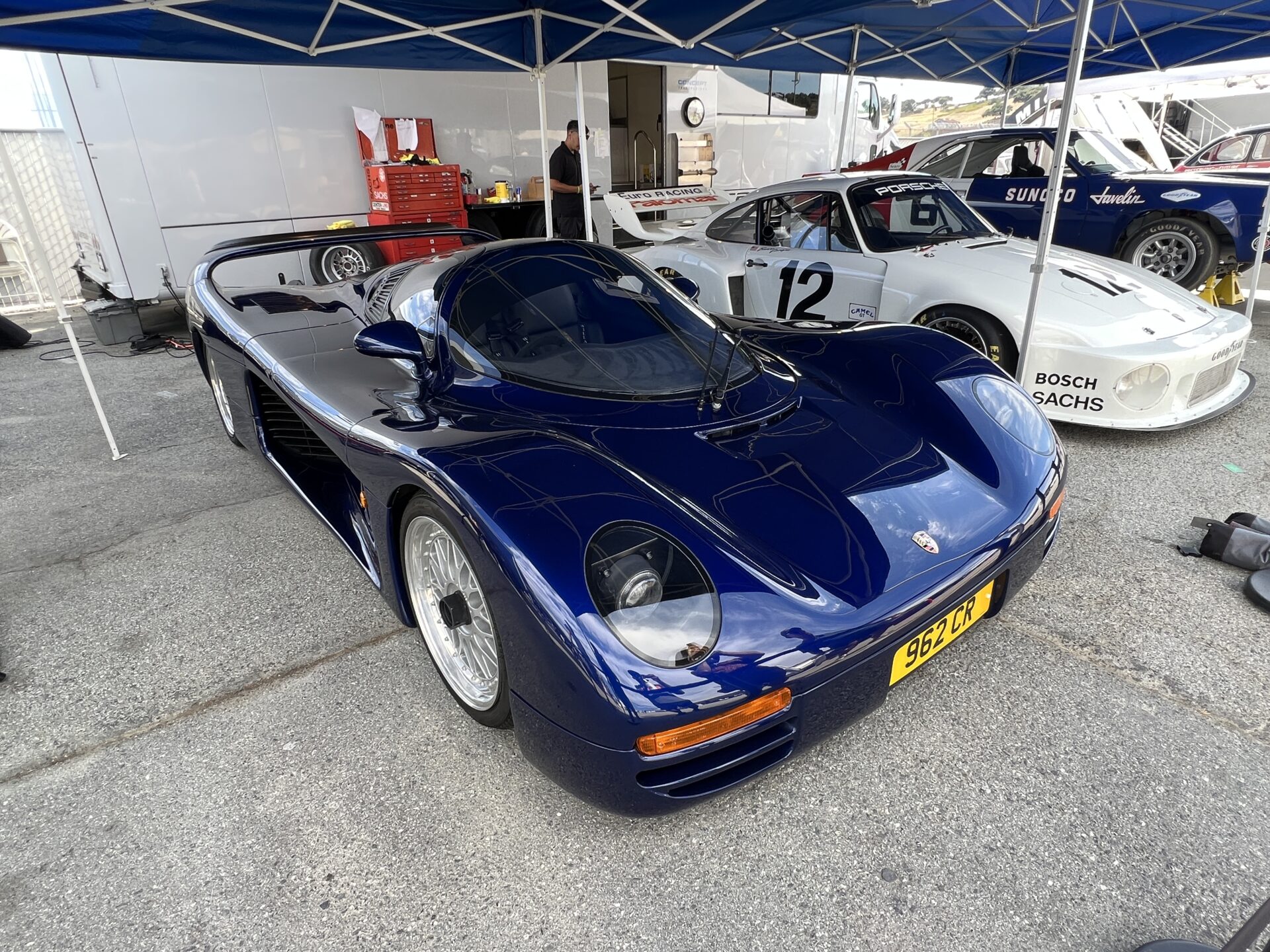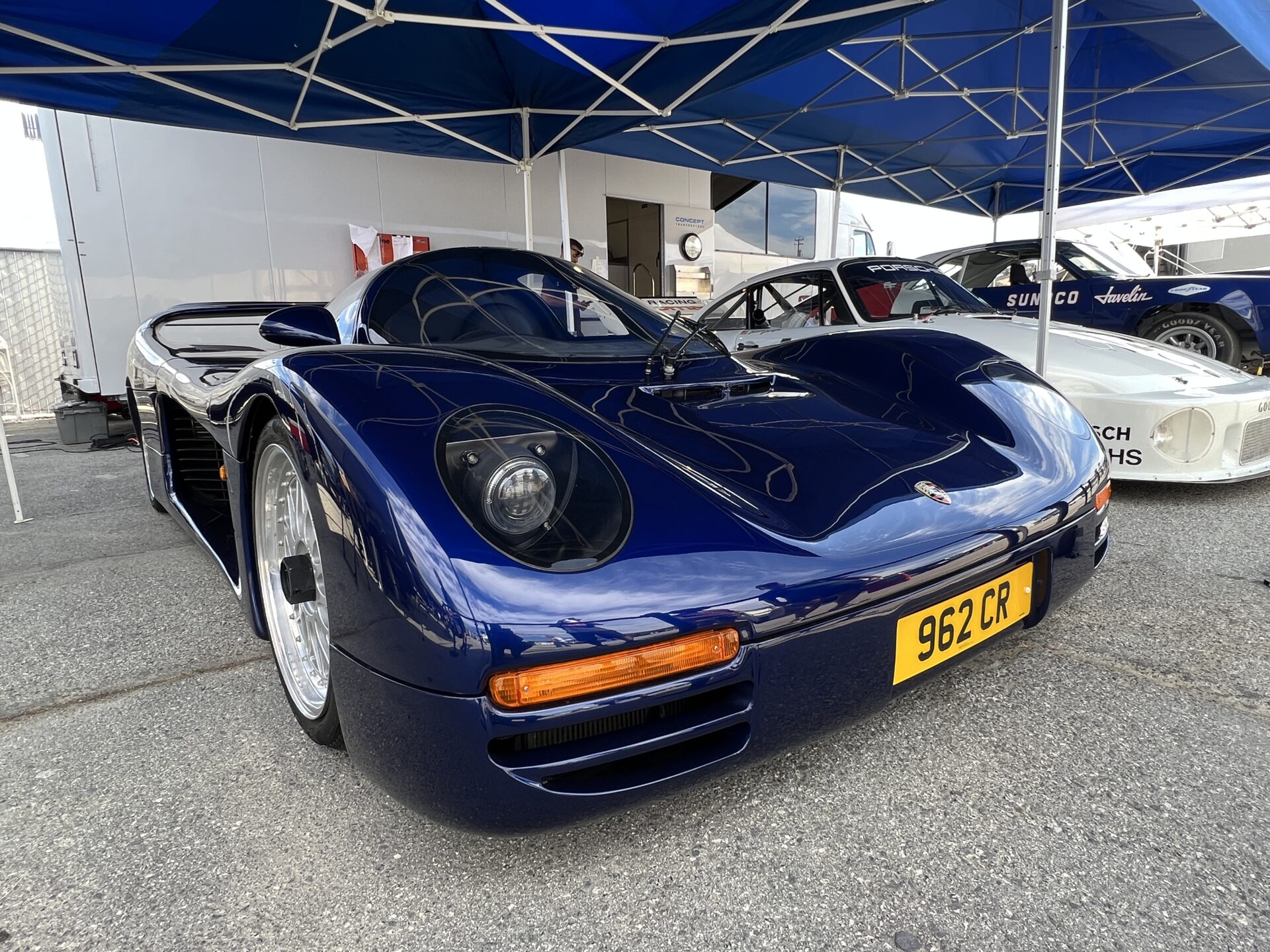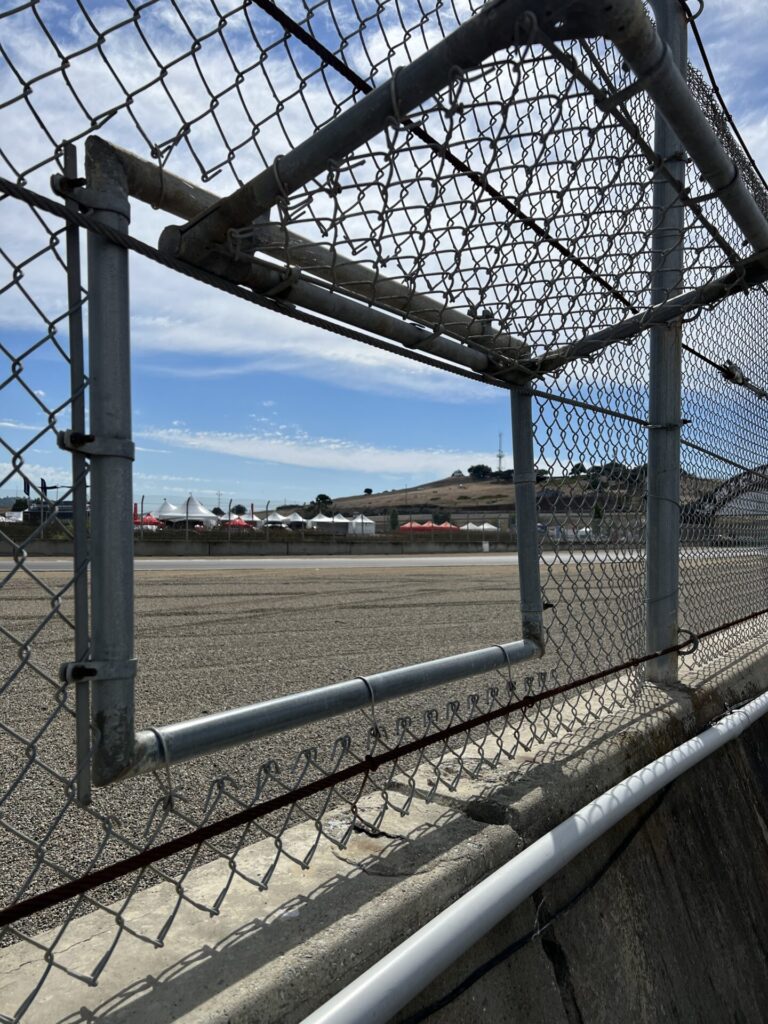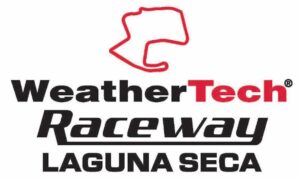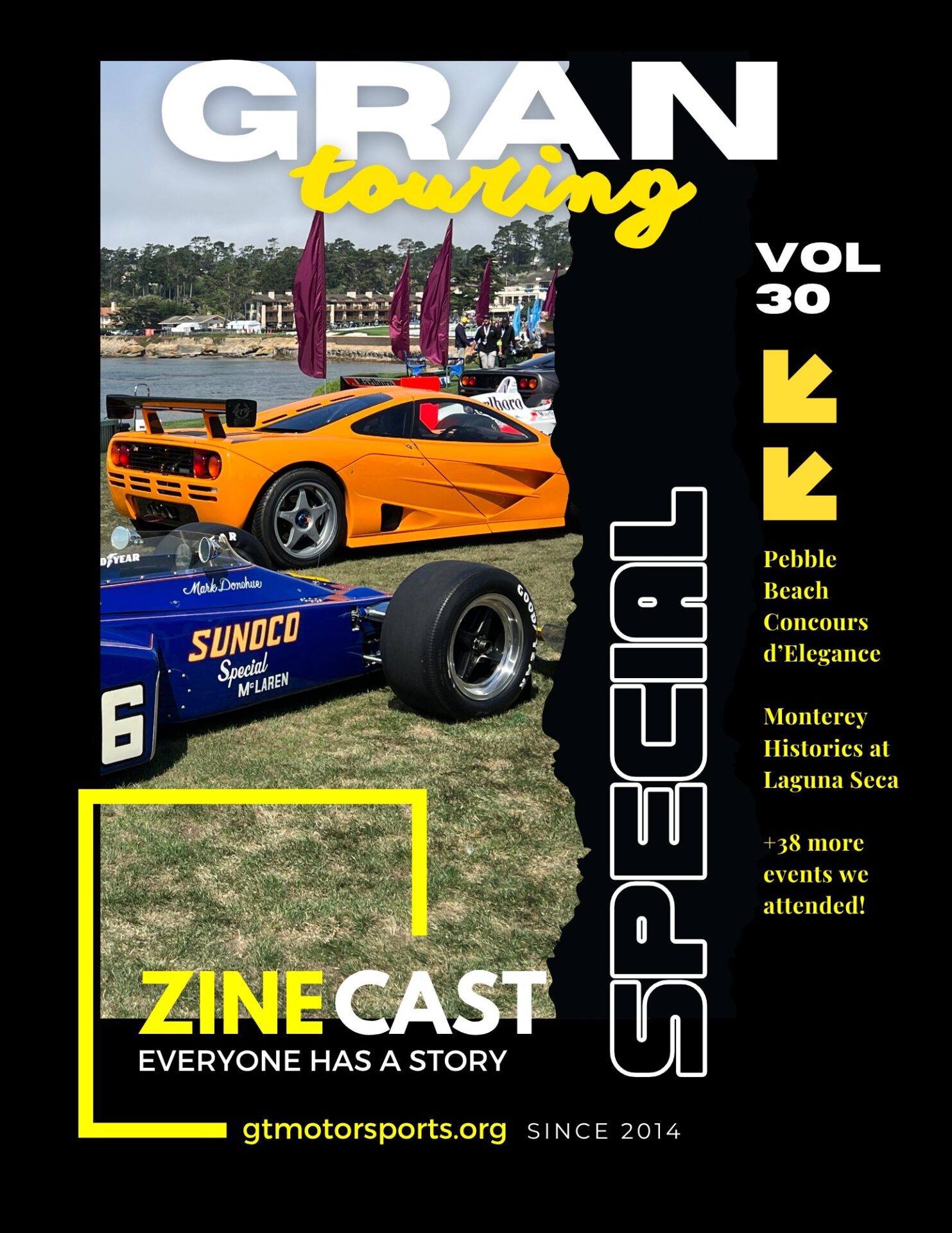WeatherTech Laguna Seca Raceway is held in highest regard as one of the “driving nirvana” tracks in the United States and it was the perfect back drop to reignite the discussion around 911 v Corvette in Part-1 of this article over on Garage Style Magazine. However, it’s time to dig a little deeper into the weeks events at the Rolex Monterey Historics.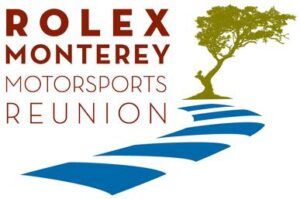
How does this all tie back to Monterey Car Week or even the famed Pebble Beach Concours d’Elegance?
The Pebble Beach Grand Prix (originally known as “The Pebble Beach Road Races”), were a series of legendary sports car races held in the picturesque coastal town of Pebble Beach, California, from 1950 to 1956. These races, were held on a challenging course that wound its way through the scenic Del Monte Forest and attracted some of the finest drivers and cars of the era, including legends like Phil Hill and Carroll Shelby. Initially run on public roads, the races eventually moved to Laguna Seca Raceway. Voila!
Though Car Week may have a disputed “kick-off or start date” the Monterey Historics have always run autonomously but concurrently with all the surrounding Car Week festivities. It’s the place where petrol-heads, like myself, flock to see “art in motion” rather than carefully parked on manicured golf courses, like this gorgeous Ferrari LeMans Prototype below.
The Monterey Historics span the majority of car week kicking off on Tuesday with Practice Sessions, followed by Qualifying and finally 2 full days of racing. All of this action leads up to and ends on Saturday before the Pebble Beach Concours d’Elegance just like in the 1950s. There’s something for every generation of vehicle and motorsports enthusiast.
Like most of the historic race tracks in the United States found on the major racing schedules, Laguna Seca has all the amenities you’d find at any world-class track. VIP lounges, eateries, vendor booths, clean facilities, ample parking and shuttle services, but more importantly… the ability to see every corner.
Some tracks might be easier than others to navigate between different sections and corners on foot, but Laguna won’t be on that list. Being built surrounding a dry lake bed, the natural terrain of the mountains in the area makes for a dusty uphill climb most everywhere you venture. But it’s worth it!
Part of Laguna Seca’s charm is the famed combination of corners (Turns 8 and 8A) better known as “The Corkscrew.” This section of the track is one of the most iconic and challenging turns in motorsports. It features a dramatic elevation change with a steep descent, dropping from the entry to the exit is approximately 59 feet (roughly 6 stories) over a very short distance, making it an extremely steep and challenging section of the track (as seen below).
This elevation change, combined with the sharp left-right combination of turns, creates a unique and thrilling experience for drivers as they navigate this famous part of the circuit.
2023 Rolex Monterey Historics – The Run Groups
There is so much to do and see at the Monterey Historics, you could spend time wandering the paddock talking with drivers about their stories, or learning more about their cars, and in some cases they probably wouldn’t mind if you lent a hand turning some wrenches.
The schedule of events for the historics is jam packed with 13 run groups featuring all eras and types of race cars. From the pre-war classics, to compacts like Mini Coopers & FIATs, and ground thumping Trans-Am cars or vintage Formula 1, it also includes other parades of vehicles and exhibitions.
If you’re an avid fan of racing, the HSR and SCCA have carefully curated the following classes of cars and racing for you to enjoy throughout the week.
- Formula 5000
- 1966-1985 Formula One – non-turbo
- 1966-1974 Can-Am; 1963-1968 USRRC – V8 only
- 1966-1972 Trans-Am
- 1955-1969 Saloon cars
- 1972-1981 FIA, IMSA, GT, GTX, AAGT, GTU, Trans Am
- 1981-2007 GTP, Group C, DP, WSC, LMP & GT1 (GT1 through 2009)
- 1955-1967 SCCA Production – Large Displacement
- 1955-1967 SCCA Production – Small Displacement
- 1927-1955 Grand Prix/Open wheel single seat racing cars
- 1947-1960 Front-Engined Sports Racing and GT
- 1981-1991 GTO/Trans-Am
- 1961-1971 FIA Manufacturers Championship
- Ragtime Racers exhibition
From this fabulous line-up of racing history we chose to focus on Groups 4, 6 and 13 as being a few of the ones that were “most important” because they resonated with our childhoods.
Group 4: Trans AM (1980-1991)
The 1980s Trans-Am series marked a resurgence in American muscle car racing. After the decline of the original Trans-Am era in the 1970s, the ’80s saw a revival, with iconic muscle cars like the Chevrolet Camaro, Ford Mustang, and Pontiac Firebird returning to the track.
Group 6: Vintage Formula 1 (1966-1985 non-Turbo)
Beginning with the introduction of the Ford-Cosworth DFV (Double Four Valve) V8 engine in 1967 along with aerodynamic advancements, including the introduction of wings and ground effects, these changes started to shape car design and racing. Drivers like Jackie Stewart, Emerson Fittipaldi, and Jochen Rindt emerged as stars. In the 1970s, Ferrari, with its 12-cylinder naturally aspirated engines, became a dominant force, winning multiple championships. The rivalry between Ferrari and McLaren added excitement to the sport, while Niki Lauda and James Hunt became iconic figures in this era.
Later in this period, ground effects technology, which used the underbody of the car to generate downforce, became prevalent. The Brabham team, led by Bernie Ecclestone and Gordon Murray, introduced innovations like the BT46B “fan car.” Drivers like Mario Andretti and Alan Jones achieved success during this period. The late 1980s saw the transition to turbocharged engines, marking the end of the naturally aspirated era in Formula One. Formula One’s history from 1966 to 1985 is rich with innovation, iconic cars, and legendary drivers, making it a pivotal chapter in the sport’s evolution.
Group 13: IMSA GTP, Group C & ALMS LMP-1
This combined class of cars is the most perfect pairing of racing super heroes. The GTP class emerged in the early 1980s, primarily in the United States, featuring purpose-built prototypes. Iconic cars like the Porsche 962, Jaguar XJR, and Nissan GTP ZX-Turbo dominating this era.
Group C was a widely recognized international sports car racing category, featuring prototypes. Le Mans 24 Hours was the centerpiece of the Group C calendar, with famous cars like the Porsche 956 and 962, Jaguar XJR-9, and Sauber Mercedes C9. The later LMP classes (LMP900, LMP675, LMP1, LMP2) are known for their participation in prestigious events like the Le Mans 24 Hours and American Le Mans Series. Cars like the Audi R8, Peugeot 908, and Toyota TS050 Hybrid dominated LMP in the late ’90s and early 2000s. Put ALL of that together and you get one of the wildest and most eclectic run groups to watch at the historics.
Thankfully, all 13 run groups are on track multiple times throughout the course of the week. The cars are on track for 25 minute sessions multiple times during the week, but rest assured there’s tons of racing action throughout, the track is very rarely quiet.
Celebrating 70 years of Corvette Racing
Harley J. Earl and the Le Sabre concept car left a lasting impression on the village of Watkins Glen which inspired the creation of the iconic Corvette as we learned from our friends at the IMRRC. Corvettes have been run in Grand Prix racing by privateers since the 1950s, while the modern factory-backed Corvette Racing team has raced since the introduction C5.R in 1998 to its most recent win at the 100th Anniversary LeMans 24-hours in France with the C8.R driven by Ben Keating, Nico Varrone and Nicky Catsburg.
This year, everyone is either talking about or celebrating Corvette’s 70th birthday and the Monterey Historics have joined the fray. Guests of Break/Fix like Bill Warner, were on-site to help usher in and parade various race and prototype Corvettes for this celebration as well. You can learn more about the history and significance of Corvette in another article we published, or jump back to Part-1 of this article on Garage Style Magazine for a discussion about the rivalry between Porsche and Corvette.
Car Spotting: Porsche 962 CR
This has to be one of the coolest cars in the paddock. Predating the famed Porsche 911 GT1 Strassenversion, the 962 CR is a rare and highly sought-after sports car. The CR stands for “Customer Racing” and was not a racing car like the Porsche 962, which was a successful endurance racing prototype. Instead, the 962 CR was a road-legal, limited-production sports car with only 7 units being sold in the early 1990s.
Overall, the Pebble Beach Grand Prix played a significant role in the early development of sports car racing in the United States and is remembered as an iconic event in motorsports history and was always revered as the event that led up to the Pebble Beach Concours d’Elegance where the race cars were put on display after completing the Grand Prix.
The track’s challenging layout, including the famous Corkscrew, provides a thrilling backdrop for various racing series, including IndyCar and IMSA. The Grand Prix of Monterey is known for attracting top-tier racing talent and offering fans an unforgettable weekend of high-speed competition in the stunning natural setting of WeatherTech Laguna Seca Raceway. It continues to be a highlight on the motorsports calendar, showcasing the skill and speed of some of the world’s most elite drivers and teams.
Even though the original Pebble Beach Grand Prix was replaced with the “The Grand Prix of Monterey” in 1957 and moved to Laguna Seca, it has become a staple of American motorsports and its something we recommend everyone visiting the Monterey-area for Car Week should attend. #neverstoplearning.


